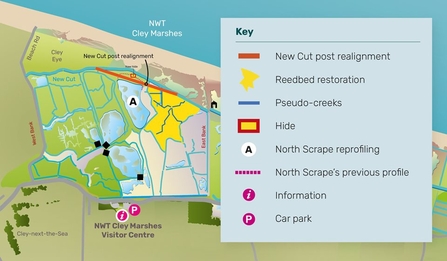The site is one of the country's most popular birdwatching sites, attracting more than 110,000 visitors each year.
As with many other coastal sites, an increase in storm events has meant that the sea is flooding inland more frequently, threatening sensitive freshwater wildlife habitats that the north Norfolk nature reserve is famous for.
Freshwater reedbeds found at the site play a key role in the survival of vulnerable species including bittern, marsh harrier and otter, and until now have been protected by the 'New Cut' - a special drain which helps to remove salt water from the site before it encroaches the freshwater habitat found further inland.
However, in recent winter storms, huge volumes of shingle have been pushed by waves onto the nature reserve, blocking parts of the drain.


